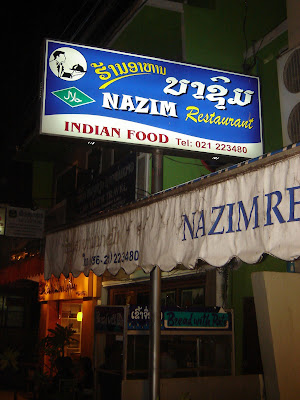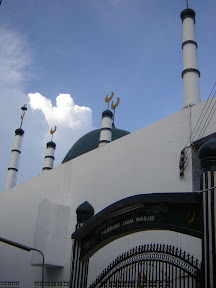By Yoginder Sikand, TwoCircles.net,
With a population of less than seven million, Laos is one of the smallest countries in South-East Asia. Besides being one of the poorest countries in the world, Laos has the dubious distinction of being the world’s most heavily bombed country. From 1960 to 1973, the USA, in its brutal undeclared war against Laos, dropped over three million tons of bombs across the country, mainly on civilian targets, causing untold death and destruction.
Some sixty per cent of Lao’s population belongs to the dominant Lao ethnic group, most of who claim to be Buddhists. Around a third of Laotians, mainly from the minority Hmong and Khmu communities, are animists, worshipping various forest and ancestor spirits. Muslims form a very insignificant proportion of Lao’s population. Community leaders estimate their number of be less than seven hundred, making Laos possibly the country with the lowest number and proportion of Muslims in the whole of Asia.
The first Muslims in Laos are said to have arrived in the early twentieth century, when the country was under French colonial rule. Most of them were Tamil-speaking Labbais and Rawthers, many of them from French-ruled Pondicherry. Most of them were single men, who worked mainly as guards and labourers in Vientiane, the capital of Laos. They were later joined by Pashtu-speaking Pakhtun Muslims from the North-West Frontier Province in what is now Pakistan. Many of these were earlier employed in the British army and had been stationed in neighbouring Burma during the First World War.
In 1953, Laos won freedom from the French and a long and bloody struggle. However, years of chaos followed, plunging Laos into a deadly war between the American-backed royal forces aligned to the unpopular king and the communist Pathet Lao, supported by Vietnam and China. In 1973, America was forced to halt its war against Laos, and, two years after, the communists took over the entire country and established the Lao Peoples’ Democratic Republic.
In the mid-1960s, the Muslim population in Laos, almost all of Indian origin, was estimated at around seven thousand. However, the war in the country forced most of them to flee to India and also to various Western countries. Most of those who remained, says Ali Baqir, a third generation Lao of Tamil origin, were the poor, who could not afford to shift elsewhere.
Today, around two hundred Indian Muslims remain in Laos, almost all of them of Tamil origin. Most live in the country’s capital, Vientiane, which is located on the banks of the Mekong river, just across from Thailand. The rest live in three other towns in the country—Luang Prabang, Pakse and Savannakhet. Most of them are engaged in the cosmetics trade, importing their goods from China, Vietnam and Thailand.
Every major town in Laos (and there are just a few of them) has at least one Indian restaurant, and all of these are run by Tamil Muslims. The biggest Lao Indian restaurateur is 60 year-old Muhammad Nazimuddin, whose official Lao name is Samsack Sivilay. He runs a chain of six very popular Indian restaurants, all named after him, across the country.
Nazimuddin’s is, as he explains, a classic rags-to-riches story. His father left his village of Mayuram in Tamil Nadu’s Thanjavur district in the early 1940s and set up a small business in Saigon in Vietnam, which was then under French occupation. Twenty years later, he left Saigon, divorced his Vietnamese wife and returned to India along with Nazimuddin, who was then just two years old.

Nazimuddin studied in his village till the eighth grade and soon after decided to travel to Laos, where he began working as a security guard in Vientiane. Thereafter, he worked as a cook in a small eatery, for which he got a bed and food but no money. Later, he set up his own small food stall, catering mainly to visiting Indians who came to Laos mainly to have their Tai visas renewed.
In 1995, Nazimuddin set up the ‘Nazim’s Indian Restaurant’ in a busy commercial district in Vientiane along the Mekong river. This was a time when the ruling communist party was gradually opening up the country to the outside world. The restaurant catered essentially to the rush of mainly Western tourists crossing over from Thailand eager to explore the hitherto closed and remote country. Today, the six ‘Nazim’s Indian Restaurants’ across Laos still have broadly the same clientele, and for travelers tired of noodle soup and desperately seeking to avoid almost every conceivable sort of meat that is sold at many Lao eateries (including even frogs, civets, dogs, grasshoppers and snakes), they are a major blessing.
Less than a hundred of the Indian Muslims living in Laos have Lao citizenship. Most of the others, who arrived in the country in the last two decades, have work or residence permits that need to be renewed annually. These are mainly young men, whose wives and children remain in India. Some twenty resident Tamil Muslim men have married Lao women. Some of them have wives in India, too, and, so I was told, in a few cases their Indian wives are not aware of their second marriages.
 There are just two mosques in the whole of Laos, both of them in Vientiane. The Masjid Azhar caters mainly to Muslims of Cambodian origin, most of whom are small traders in herbal medicines. The Jamia Masjid serves mainly Muslims from South Asia, mostly Pakhtuns and Tamil Indians. The Imam of the latter mosque, Maulvi Qamruddin, is a Tamil-speaking Rawther, and addresses the Friday congregations in both Urdu and Tamil, alternately using one of the languages every week. The mosque has a small maktab attached to it, where children are taught Arabic and about Islam. Classes for the latter are held in the Lao language. There is no Islamic literature available in Lao, and so the mosque and the maktab have a stock of books (including translations of the Quran) in the Thai language, which is very similar to Lao.
There are just two mosques in the whole of Laos, both of them in Vientiane. The Masjid Azhar caters mainly to Muslims of Cambodian origin, most of whom are small traders in herbal medicines. The Jamia Masjid serves mainly Muslims from South Asia, mostly Pakhtuns and Tamil Indians. The Imam of the latter mosque, Maulvi Qamruddin, is a Tamil-speaking Rawther, and addresses the Friday congregations in both Urdu and Tamil, alternately using one of the languages every week. The mosque has a small maktab attached to it, where children are taught Arabic and about Islam. Classes for the latter are held in the Lao language. There is no Islamic literature available in Lao, and so the mosque and the maktab have a stock of books (including translations of the Quran) in the Thai language, which is very similar to Lao.
Lao’s Tamil Muslims, along with Pakhtun and Cambodian Muslims living in the country, recently joined together to set up the Muslim Association of Laos to oversee Muslim community affairs and also to liaison with the government. Says Muhammad Rafi, President of the Association (and also teacher at the maktab attached to the Jamia Masjid), ‘Our relations with the Lao government have always been very good and we face no problems at all in our religious affairs’. ‘The Lao people, in general, are very gentle and affectionate’, he adds, ‘and we think it is our good fortune to be living here’.
[Photos by Yoginder Sikand]

